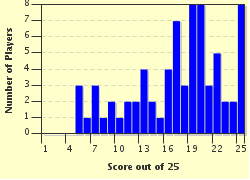Quiz Answer Key and Fun Facts
1. I was a Sauropod dinosaur. I lived in Africa during the Hettangian stage of the early Jurassic period and my name means "Volcano tooth". Who am I?
2. My name means "Different toothed lizard". I lived in South Africa during the Hettangian and Sinemurian stages of the early Jurassic period. I was a small Ornithopod dinosaur. Who am I?
3. I was a primitive armoured dinosaur with a name that was created from an acronym. I lived in Germany during the Toarcian stage of the early Jurassic period. Who am I?
4. Who am I? I was a tiny insectivorous mammal that looked something like a mouse. My name means "Big head" and I lived in China during the Sinemurian stage of the early Jurassic period.
5. Who am I? I lived in Southern England during the Callovian stage of the middle Jurassic period. My name means "Well-curved vertebrae" and I was a large Theropod dinosaur.
6. Who am I? I was a medium-sized Theropod dinosaur with a hollow crest on my head. My name means "Single crested lizard" and I lived in China during the Oxfordian stage of the late Jurassic period.
7. I lived in Argentina from the Callovian stage of the middle Jurassic period to the Oxfordian stage of the late Jurassic period. I was a large Theropod dinosaur with a name meaning "Piatnitzky's lizard". Who am I?
8. I was a Sauropod dinosaur. My name means "Chieftain lizard" and I lived in China during the Bathonian and Callovian stages of the middle Jurassic period. Who am I?
9. My name means "Almond tooth". I was a Sauropod dinosaur and I lived in Argentina during the Bajocian stage of the middle Jurassic period. Who am I?
10. Who am I? I lived in Australia during the Aalenian and Bajocian stages of the middle Jurassic period. I was a Sauropod dinosaur with a name meaning "Rhoetos lizard".
11. Who am I? My name means "Lizard from the Fergana Valley". I was a Sauropod dinosaur and I lived in Kyrgyzstan during the Callovian stage of the middle Jurassic period.
12. Who am I? I was a small Ornithopod dinosaur and I lived in China during the Bathonian and Callovian stages of the middle Jurassic period. My name means "Fast lizard".
13. I was a medium-sized early Stegosaur with a name meaning "Lizard from Huayang". I lived in China during the Bathonian and Callovian stages of the middle Jurassic period. Who am I?
14. I lived in Southern England during the Kimmeridgian stage of the late Jurassic period. I was a medium-sized Ichthyosaur and my name means "Broad wing". Who am I?
15. I was a large marine reptile belonging to a group called Pliosaurs. My name means "Smooth-sided tooth" and I lived in England, France, Germany and Russia during the Callovian stage of the middle Jurassic period. Who am I?
16. Who am I? I was a relatively small Pterosaur. I lived in Spain, Germany, England and Africa during the Oxfordian and Kimmeridgian stages of the late Jurassic period and my name means "Beak snout".
17. Who am I? With a name meaning "Wing finger", I'm one of the most well known Pterosaurs. I lived in Germany, France, England and Africa during the Kimmeridgian and Tithonian stages of the late Jurassic period.
18. Who am I? My name means "Savage lizard". I was a large Theropod dinosaur and I lived in the USA during the Tithonian stage of the late Jurassic period.
19. I lived in China during the Kimmeridgian and Tithonian stages of the late Jurassic period. I was a large Theropod dinosaur with a name meaning "Chinese hunter". Who am I?
20. I was a large Theropod dinosaur and my name means "The greatest reptile eater". I lived in the USA during the Kimmeridgian stage of the late Jurassic period. Who am I?
21. I was one of the smallest Theropod dinosaurs, standing no taller than a turkey. I lived in France and Germany during the Tithonian stage of the late Jurassic period. My name mean "Elegant jaw". Who am I?
22. Who am I? I'm sometimes thought of as being one of the most important prehistoric animals ever discovered. My name means "Ancient wing" and I lived in southern Germany during the Kimmeridgian stage of the late Jurassic period.
23. Who am I? My name means "Arm lizard" because my front legs were longer than my back legs. I was one of the largest land animals that ever existed. I lived in the USA during the Kimmeridgian and Tithonian stages of the late Jurassic period.
24. Who am I? I was a Sauropod dinosaur. My name means "Tremor lizard" because I was so big and heavy that when I walked the ground shook. I lived in the USA during the Kimmeridgian stage of the late Jurassic period.
25. A Sauropod, I'm one of the most famous dinosaurs. I lived in the USA during the Kimmeridgian and Tithonian stages of the late Jurassic period and my name means "Deceptive lizard". Who am I?
Source: Author
ElusiveDream
This quiz was reviewed by FunTrivia editor
rossian before going online.
Any errors found in FunTrivia content are routinely corrected through our feedback system.


